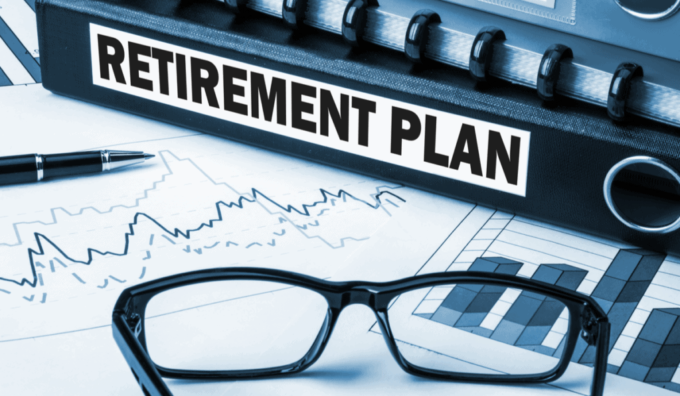Although it’s possible to put money aside for your retirement later in life, you’ll get further ahead by starting early. The longer you wait to build a nest egg for your golden years, the more difficult it is to achieve your goal. So, when’s the best time? During your 40s. That’s when you’re established in a job and many are at their peak earning years.
Getting started on your retirement savings while in your 40s also provides you with ample time to make adjustments, if needed. At this time in your life, you’re on a path that makes it possible to hit important milestones. For optimal success, consider these three tips to save for your retirement while in your 40s.
Determine Your Retirement Number

This number is the target amount of money you want to save by the time you retire. Knowing this number will help you identify how much you need to accumulate by the time you stop working. That way, you’ll have a portfolio that supports you as a retiree. Amazingly, about 81% of people in the United States have no clue how much money they’ll need to retire.
Without a goal, saving for retirement becomes a challenging task. Unfortunately, people who don’t plan find themselves without adequate money to enjoy during their retirement years. Rather than guess, take advantage of online retirement calculators. You can go the paid-for route, which means more accurate results and better customer service. Planning software that fits this description includes WealthTrace ’s Financial Planner and Money Guide. Both have versions for consumers and financial advisors and both are very detailed and more accurate than free calculators.
Keep in mind that retirement calculators use different algorithms. For that reason, put your information into at least three. From there, you can round out your target savings. Once you have that data, you can then create an investment plan that’ll help you achieve your goal.
For instance, say you just turned 40 and currently have $50,000 in various retirement accounts. Your goal is to quit working at age 67 and have a portfolio valued at $700,000. That means you’ll need to save roughly $450 per month (if earning a 7 percent annual rate of return on investments). However, if you hold off until age 50 to achieve that same goal, you’d have to put aside about $1,500 a month.
Now, if there’s any way to start saving for your retirement before age 40, do it. The sooner you get started, the healthier your portfolio.
Pay Down Debt ASAP

A lot of people aren’t debt-free by the age of 40, especially if they own a home. However, the quicker you can pay down or be off debt, the better. In particular, prioritize anything with a high interest rate. Focus on credit cards and other types of debt with high interest, such as payday loans. With that hanging over your head, the interest will make saving money for retirement difficult.
Some people prefer to sock money away in their retirement accounts instead of worrying about outstanding debt. While that might seem like a smart thing to do, it’s not helping you achieve your goal. The bottom line is you’ll struggle to save if you’re paying more each year in interest on debt than what you earn on investments.
Without debt, saving money for retirement becomes a lot easier. However, you don’t want to ignore your retirement savings accounts completely while paying off debt. Rather, balance the two tasks. In other words, while you pay down outstanding debt, you can still put money aside for when you retire.
To determine how much you should spend toward outstanding debt and how much to save, you’ll need to consider several factors. That includes your age, the amount of high-interest debt you carry, and how much money you’ve already set aside for retirement.
If you have significant debt and you’re now 40 years old, think about reducing how much you contribute to your 401(k) until you pay off what you owe, starting with the highest-interest debt.
In comparison, if you’re close to 50 and haven’t saved much for your retirement, but you have low-interest on outstanding debt, then switch your focus to your retirement accounts. That way, there’s still time for compound growth to boost your portfolio.
Play It Safe With Your Investments But Not Too Safe

When investing, you want to do everything possible to protect your retirement funds. For that reason, you might feel tempted to move toward CDs or money market accounts, which are “safer.” Although that’s always an option, these also don’t have nearly the return on investment as you would get with less safe options such as stocks.
As you probably know, stocks fluctuate, meaning some years are good and some not so good. However, long-term, you’ll likely see an upward trend. If you decide to invest in stocks, reach beyond individual companies.
Look at exchange-traded funds, index funds, and mutual funds, as well. Spreading your money across many different stocks can reduce any risk through diversification. At the same time, putting your money for retirement in stocks will yield much higher returns compared to CDs and money market accounts.
One important note is to not forget about inflation. You want to make sure your rate of return is higher than the inflation rate and not the other way around.
Saving for your retirement while in your 40s is an excellent opportunity. You’re still young enough to make necessary adjustments to help you achieve your goal. One final note: learn how to maximize your Social Security benefits. Remember, if you need help while on your journey to save, you can reach out to a reputable financial advisor.









